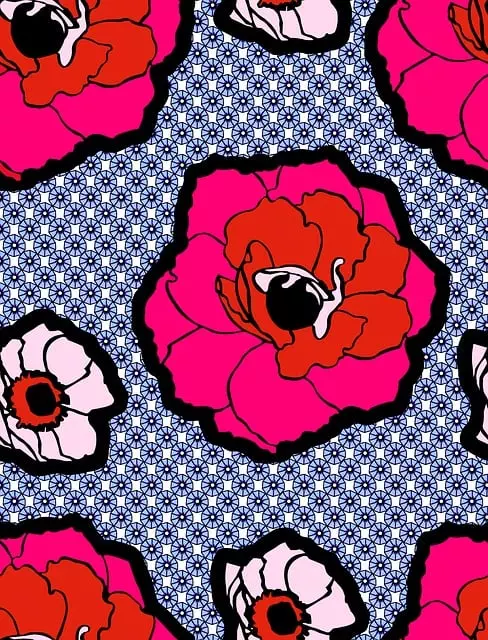Blue Lotus Leaves, historically recognized for their health benefits and now back in the spotlight for addiction treatment, are being studied for their potential to enhance the effects of kratom, a plant known for its opioid-like effects. The alkaloids within Blue Lotus Leaves may work synergistically with kratom's mitragynine and 7-hydroxymitragynine to ease withdrawal symptoms and reduce cravings, making detoxification more manageable. Additionally, these leaves offer anxiolytic and antidepressant properties that could support mental health during the recovery process, which is crucial for addressing co-occurring disorders often seen with substance use disorders. Research into this combination is ongoing to understand its full therapeutic potential and optimize its use within holistic treatment protocols. It's important to approach such treatments with caution and under medical supervision due to individual responses and potential interactions with other substances or medications. The integration of Blue Lotus Leaves alongside kratom in a comprehensive treatment plan that includes counseling, behavioral therapy, and lifestyle changes is a promising avenue for supporting sustained recovery, but it necessitates further clinical research. Users should stay informed about health considerations and monitor their responses when using these natural substances as part of their recovery journey.
Exploring the therapeutic potential of natural substances, this article delves into the role of Blue Lotus Leaves in enhancing Kratom’s efficacy for addiction treatment and recovery. We examine the scientific rationale behind their synergistic effects and offer a detailed guide on their integration into Kratom-based therapies. By examining the interplay between these botanicals, we aim to shed light on innovative strategies for sustainable addiction recovery.
- Unraveling the Potential of Blue Lotus Leaves in Kratom for Addiction Treatment and Recovery
- The Science Behind Blue Lotus Leaves and Its Synergistic Effects with Kratom in Substance Abuse Rehabilitation
- A Comprehensive Guide to Integrating Blue Lotus Leaves into Kratom-Based Therapies for Sustainable Addiction Recovery
Unraveling the Potential of Blue Lotus Leaves in Kratom for Addiction Treatment and Recovery

Blue Lotus Leaves, a plant historically revered in ancient civilizations for its psychoactive properties, have garnered renewed interest in the context of addiction treatment and recovery, particularly when used alongside kratom. Preliminary research suggests that the alkaloids present in Blue Lotus Leaves may complement kratom’s mitragynine and 7-hydroxymitragynine compounds to modulate opioid receptors in a way that can ease withdrawal symptoms and reduce cravings. This synergistic effect could potentially offer a more tolerable detoxification process for individuals transitioning away from opioids. Furthermore, the anxiolytic and antidepressant effects associated with Blue Lotus Leaves might contribute to the overall well-being of those in recovery, offering support against co-occurring mental health challenges that often accompany substance use disorders. As scientific investigation continues, there is a growing body of evidence that supports the consideration of Blue Lotus Leaves as a complementary element within holistic addiction treatment and recovery protocols alongside kratom. However, it is crucial to approach such treatments with caution and under professional supervision due to the complexity of individual responses to plant-based compounds and their potential interactions with other substances.
The Science Behind Blue Lotus Leaves and Its Synergistic Effects with Kratom in Substance Abuse Rehabilitation

Blue Lotus (Nymphaea caerulea) leaves have been used for centuries in traditional medicine due to their potential therapeutic properties. Recent scientific studies have begun to unravel the pharmacological mechanisms behind these historical uses, particularly in the context of substance abuse rehabilitation. The alkaloids present in Blue Lotus leaves, such as apomorphine and nymphedrine, may interact with the central nervous system, offering anxiolytic, sedative, and possibly antidepressant effects. These actions can complement the analgesic and mood-elevating properties of kratom (Mitragyna speciosa), which also contains alkaloids like mitragynine and 7-hydroxymitragynine. The synergistic effects of combining Blue Lotus with kratom in a treatment regimen may enhance the therapeutic outcomes for individuals recovering from addiction by providing a more holistic approach to managing withdrawal symptoms and reducing cravings. This combination is believed to modulate neurotransmitter systems, including those involving dopamine and serotonin, which are often disrupted in substance abuse disorders. As such, the integration of Blue Lotus leaves with kratom in addiction treatment protocols holds promise for a more effective recovery process, although further research is necessary to fully understand and optimize this interaction for therapeutic use.
A Comprehensive Guide to Integrating Blue Lotus Leaves into Kratom-Based Therapies for Sustainable Addiction Recovery

Blue Lotus Leaves have garnered attention in complementary therapies for addiction recovery, particularly when combined with Kratom-based interventions. The synergistic effects of these two natural substances may offer a multifaceted approach to addressing the complex nature of addiction. Kratom, derived from the Mitragyna speciosa plant, has been traditionally used for its stimulant and analgesic properties, and recent research suggests it can aid in opioid withdrawal management due to its overlapping opioid receptor binding profile. When integrating Blue Lotus Leaves into Kratom-based therapies, the combination of their respective alkaloid profiles—including 7-hydroxymitragynine from Kratom and Nitrates from Blue Lotus—can potentially modulate mood, reduce cravings, and mitigate withdrawal symptoms.
It is crucial to approach the integration of Blue Lotus Leaves into Kratom-based therapies with caution and under professional supervision. The optimal dosage and ratio of these substances can vary greatly depending on individual physiology and the specific type of addiction being addressed. Moreover, the combination should be considered as part of a holistic treatment plan that includes counseling, behavioral therapy, and lifestyle modifications to support long-term recovery. Clinical trials and further research are necessary to fully understand the efficacy and safety of this integration, ensuring that it is used responsibly as a tool in addiction treatment and recovery. Users should be informed about potential interactions with other medications and the importance of monitoring their health outcomes closely while engaging in such therapies.
Blue lotus leaves have emerged as a promising component in Kratom-based treatments for addiction recovery, offering a natural and potentially effective alternative for those seeking to overcome substance abuse. The scientific community’s understanding of their synergistic effects with Kratom has expanded, providing valuable insights into their role in rehabilitation. This guide elucidates the integration of blue lotus leaves within Kratom therapies, emphasizing the importance of a holistic and tailored approach to recovery. As research continues to evolve, it is clear that these natural substances hold potential for supporting individuals on their journey toward sustained sobriety and improved well-being.






